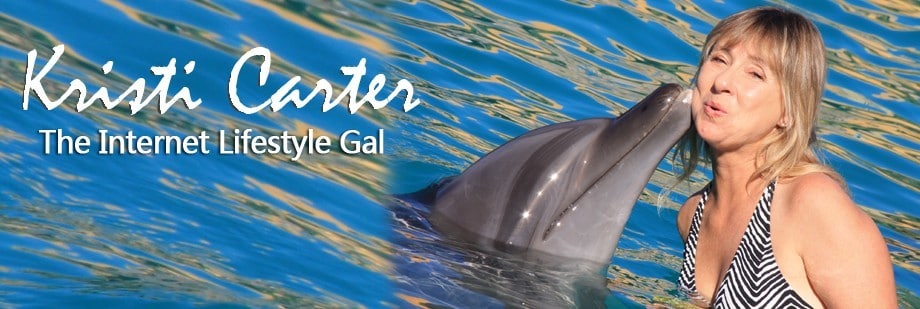How to Use Twitter Without Twitter Owning You – 5 Tips 135 Comments
Written by Tim Ferriss Topics: Low-Information Diet

(Photo: Timothy K. Hamilton)
Total read time: 5 minutes.
I’ve evolved as a user of the micro-blogging tool called Twitter.
That said, technology is a great slave but a terrible master, and Twitter can turn the tables on you with surprising subtlety. This post will explain how I use Twitter and the 5 rules I follow to keep it from using me…
I use it mostly as a digital diary for recording the fleeting moments, fun online findings, and useful tools that are worth sharing but not worth a separate blog post. For those of you who want more from me than 1-2 posts per week, Twitter is where I put most of my discoveries.
It is also amazing for real-time polling of followers on topics ranging from strength training to the best online back-up tools (in descending order of preference: www.getdropbox.com, www.sugarsync.com, www.jungledisk.com, the last of which uses Amazon’s S3).
I avoided following people until one month ago, as I didn’t want another inbox (which direct messages or “DMs” produce), and I didn’t want to inadvertently hurt the feelings of acquaintances I might neglect to follow.
Following no one avoided both problems. I elaborate on this approach in a short video here.
I started following because I was interested in observing effective, interesting updates and also measuring the impact of following on my time use. Secondarily, I noticed some fine print in Twitter’s seldom-read Terms of Service (bolding is mine):
*Spam: You may not use the Twitter service for the purpose of spamming anyone. What constitutes “spamming” will evolve as we respond to new tricks and tactics by spammers. Some of the factors that we take into account when determining what conduct is considered to be spamming are:
* If you have followed a large amount of users in a short amount of time;
* If you have a small number of followers compared to the amount of people you are following;
* If your updates consist mainly of links, and not personal updates;
Though it seems these rules aren’t yet strictly enforced (some business and RSS accounts are almost exclusively links), I didn’t want to risk being banned, as I find Twitter both fun and useful. [Update: as several readers pointed out, I read this and got things backwards. Following no one is fine; following more people than follow you can get you banned.]
The 5 Rules of Keeping Twitter Use Under Control
1. Don’t post and read at the same time.
Here’s the problem with following others, as fun as it can be.
You decide to make a quick post on Twitter.com, but then you notice the stream of updates from the people you follow. Then you click “older” a few times and peruse a few quick links like “World’s fattest cat (pic)”. Before you know it, 30 minutes have passed and you have forgotten what you were going to post, as well as your to-do list. Repeat this whenever your mind wanders throughout the day = nothing done.
Having your friends’ updates as the default dashboard helps Twitter’s pageview count but can kill productivity.
I suggest writing updates (“tweets”) separately from reading friends’ updates, so that you can better prevent entering the hyperlink blackhole. I read friends’ updates after 5pm and use Ping.fm, which automatically shortens URLs, during business hours to update both Twitter and Facebook status at the same time. I found TweetDeck and other applications, while full of cool features, too seductive and easy to overuse.
2. Set alerts or blocks on Twitter usage.
My time on Twitter immediately more than doubled once I followed others, despite the misperception that I was still spending roughly the same amount of time on the site. I used RescueTime (Disclosure: I am now an investor in RT, but I recommended them for months before we were introduced) to track usage and then set alerts, which is how I measured the increase and reigned in overuse. Use a program like RescueTime or MeeTimer to alert you when you exceed a pre-determined time on Twitter, or when you’re about to load the Twitter page.
For those who want to stronger methods for preventing time wastage, download Firefox and use LeechBlock to block certain sites entirely for set periods. From their site:
“You can specify up to six sets of sites to block, with different times and days for each set. You can block sites within fixed time periods (e.g., between 9am and 5pm), after a time limit (e.g., 10 minutes in every hour), or with a combination of time periods and time limit (e.g., 10 minutes in every hour between 9am and 5pm). You can also set a password for access to the extension options, just to slow you down in moments of weakness!”
3. Follow those who won’t create another inbox, or follow everyone and go Gary V.
I follow mostly close friends and celebrities, both of whom are unlikely to send me many direct messages, as the former knows I prefer phone and the latter doesn’t know I exist. The other approach, which bruises fewer egos, is to follow friends and strangers alike but make it clear that you don’t read any DMs, a la Gary Vaynerchuk. Based on attempts to the do the latter on Facebook and LinkedIn, I’ve concluded that most of the world doesn’t read directions or alerts, so I opted for the friend and celeb option.
4. Don’t post unless you add more value than the attention you consume (both yours and others’):
1. Add value if you consume attention.
I use Twitter as a “micro-blogging” platform, exactly how it’s most often described. Just as I wouldn’t put up a blog post that reads “just ate a burrito. Mmmm… good,” as it consumes readers valuable attention without adding value, I wouldn’t put up such a post on Twitter. On the other hand, “Just had an incredible mahi-mahi burrito at [best unknown taco stand] in San Diego. Must-eat: www.website.com In NYC, try: www.website2.com” adds value with actionable details. Mundane perhaps, but still a cool “to-do” that ethnic food lovers can tuck in the back of their heads.
Some self-indulgent tweets are fine, but make sure 90%+ help or entertain your readers somehow. Information empty calories are parasitic.
2. Use the tool for its best purposes and ignore the rest.
Use a tool for what its best suited to do. Don’t make a Swiss army knife out of every social media tool or you’ll end up with nothing but overwhelm, passive-aggressive “friends,” and a dozen separate inboxes.
I use the blog for testing ideas/campaigns/memes, catalyzing social change, and introducing more developed concepts so I can watch and track their impact and evolution in the blogosphere.
I use Twitter to broadcast time-sensitive suggestions, questions, events, random facts, and happenings, and other ideas that don’t justify an independent blog post. I don’t want another IM program.
3. Linking is fundamental to adding value.
Twitter is perfect for honing your word economy and value-to-attention contribution: offer a brief takeaway and quicks links to more resources for those interested. Minimal attention impact for the uninterested with gateways to more goodies. Here are a few recent examples.
5. Do interact, but don’t try to respond to everyone. Don’t overuse Twitter out of a compulsion to please others.
To quote @karmakorrupt via Twitterholic extraordinaire @sacca: “Seeking approval from others is a full time job with no vacations or benefits.”
Remember: Twitter is something you chose to do. Unless you work at Twitter, chances are that you have another job (or family) that’s more important. Focus on doing big things and enjoying Twitter and similar tools in the downtime.
Related Links:
See Tim’s profile on Twitter
Measuring What Really Works on Twitter
Top 10 Twitter Tips for Beginners
5 Ways to Use Twitter for your Business or Career (NY Times

PS:Have you thought putting video to this blog to keep the people more interested?I think it works.
I liked a resource. Already many resources look well at last that have learned to do beautifully. Our information century has forced people to do the affairs and instantly to solve any questions through a global network the Internet.
The possession of unlimited power will make a despot of almost any man. There is a possible Nero in the gentlest human creature that walks.
Thanks man. This has been fun hearing
Thats a great idea! What kind of videos would you like to see?
KC
Pingback: gary
I love your blog. Nice job. 🙂
“Fail Harder” – Mark Zuckerberg